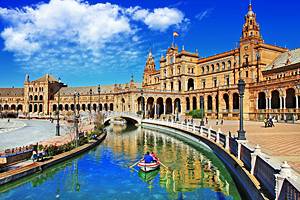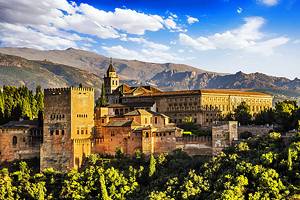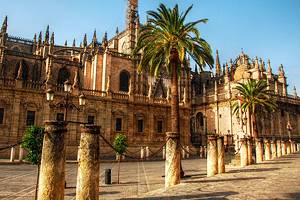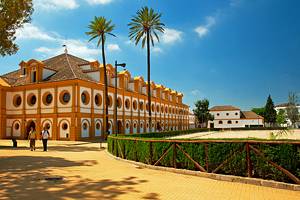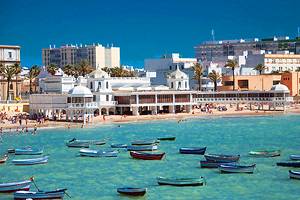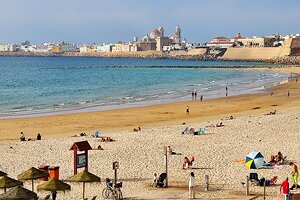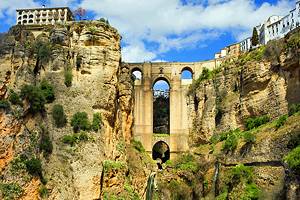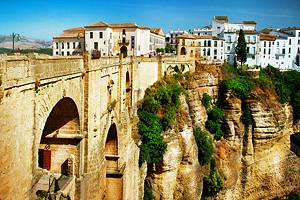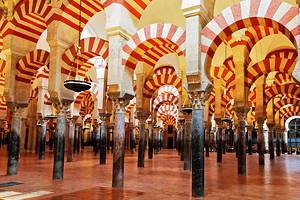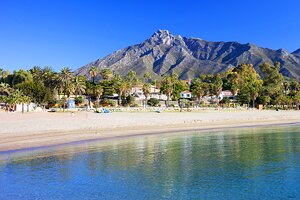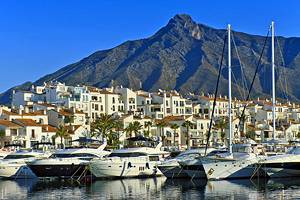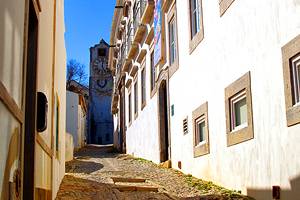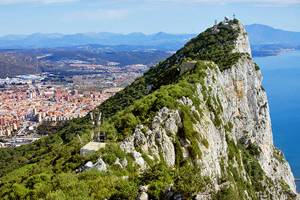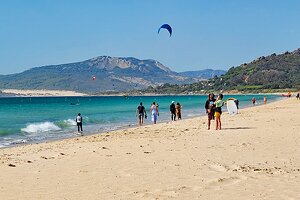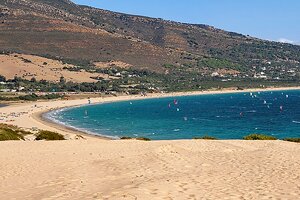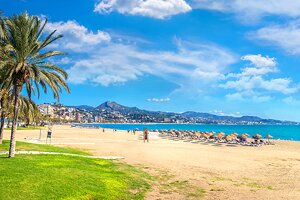Beautiful Pueblos Blancos of Andalusia (White Villages)
Authors Michael and Lana Law spent 10 weeks touring southern Spain, visiting towns and villages along the way.
Find an enchanting world of Moorish charm by venturing off the beaten path to the picturesque Pueblos Blancos of Andalusia. These small, quiet hilltop villages of whitewashed houses are surrounded by a pristine mountainous landscape and are full of old-world romance.
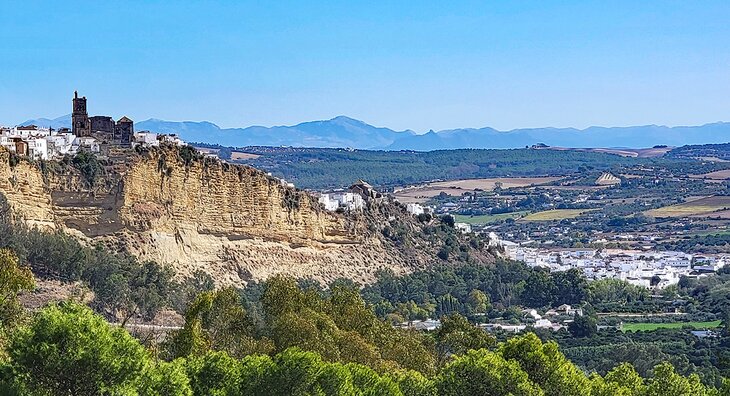
The Pueblos Blancos barely make it onto most Andalusia itineraries, but are certainly worth the extra effort and time to visit. After sightseeing in Andalusia's touristy cities of Seville, Granada, and Córdoba, the Route of the Pueblos Blancos offers a welcome escape to nature and a more relaxing pace.
Some of the villages are close to each other and can be easily combined on a driving day trip.
Arcos de la Frontera: Gateway to the Pueblos Blancos
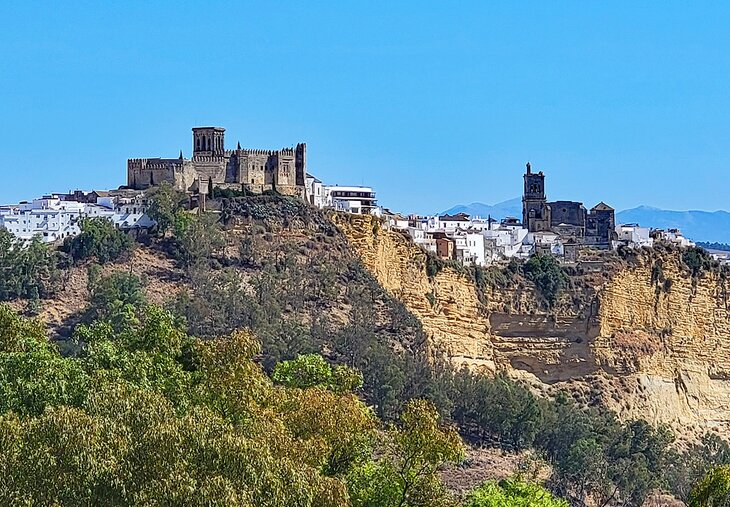
The gateway to the Route of the Pueblos Blancos, this beautiful hilltop village is the perfect place for a stroll through the old streets or a lunch stop at an outdoor patio.
Perched on a hillside at the edge of a cliff above the Río Guadalete, Arcos de la Frontera is a National Historic Monument. Simple whitewashed houses line the streets, and a Moorish fortress sits on the hilltop. The castle dates back to the 11th century, but was later rebuilt after the Christian Reconquest. It is not open to the public.
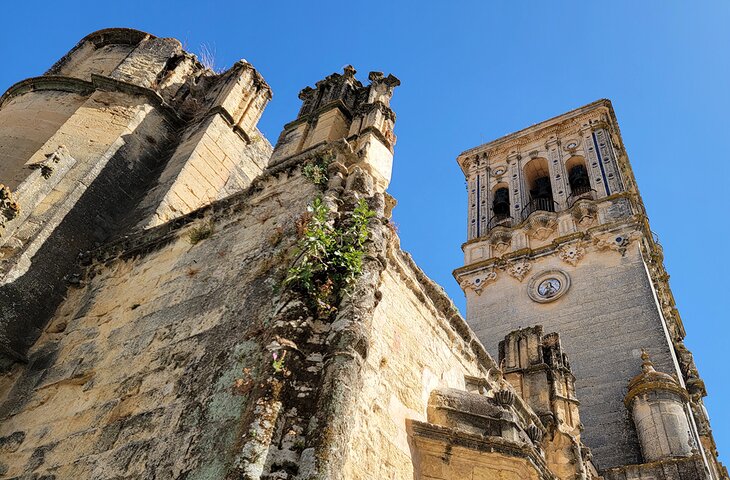
The 14th-century Iglesia de San Pedro is another eye-catching building, standing dramatically above a steep cliffside. You can easily walk from the fortress to this church, and numerous restaurants can be found between the two.
At the center of town on the Calle Deán Espinosa, the Basílica de Santa María de la Asunción, built in the 14th century on the site of a Moorish mosque, blends a variety of architectural styles, including Gothic, Plateresque Renaissance, Mudéjar, and even 17th-century Baroque details.
The Plaza del Cabildo, the main square featuring the Basilica and Parador, leads to the Mirador de la Peña Nueva. This well-known viewpoint hangs directly over a sheer cliff, providing expansive views of the Guadalete River valley below.
Located in the old town are hidden squares with cute restaurants serving up fine local fare. Grab a shady table and settle in for a rest; you may need it because the walk from the parking area to the old town is all uphill!
Arcos de la Frontera is also known for its lively Easter festival, as well as its delicious regional cuisine.
For a pampering hotel experience, travelers should stay at the Parador de Arcos de la Frontera. This luxury hotel is housed in a splendid historic building (formerly the local magistrate's house) overlooking the Guadalete River. The hotel has a sumptuous interior adorned with wood-beamed ceilings and classic decor, an outdoor terrace that affords awe-inspiring views, and an elegant restaurant that serves local specialties.
Free parking for Arcos de la Frontera is located at the base of the hill in a dirt lot just before the pedestrian overpass. If this is full, and it often is during the high season, the underground paid public parking garage (Parking Subterraneo Plaza de España) is near the old town entrance.
Dramatic Scenery, Moorish Charm, and Festivals in Ronda
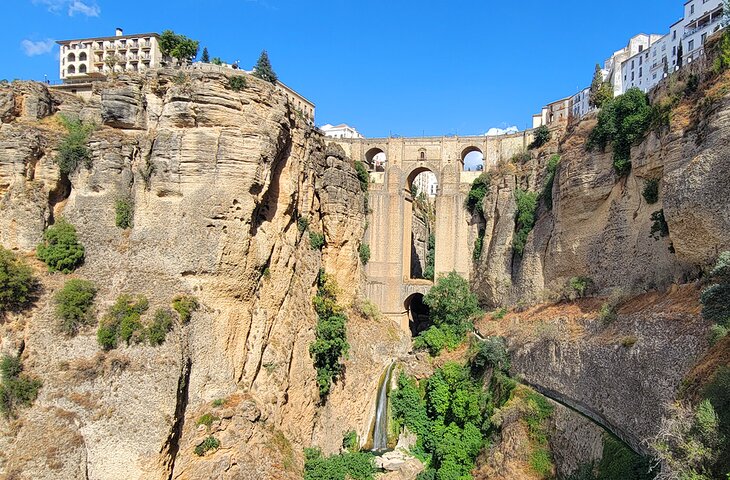
Perilously clinging to a sheer cliff, Ronda stands at a dizzying height and offers thrilling views of the dramatic landscape. About 85 kilometers from Arcos de la Frontera, the town straddles the El Tajo Gorge, with the emblematic Puente Nuevo (New Bridge) crossing the jaw-dropping 150-meter-deep ravine.
Besides its spectacular setting, Ronda is famous for bullfighting. The town's Plaza de Toros is Spain's second-oldest bullring. Ernest Hemingway immortalized the appeal of Ronda and its bullfighting tradition in several of his novels, the most famous being Death in the Afternoon.
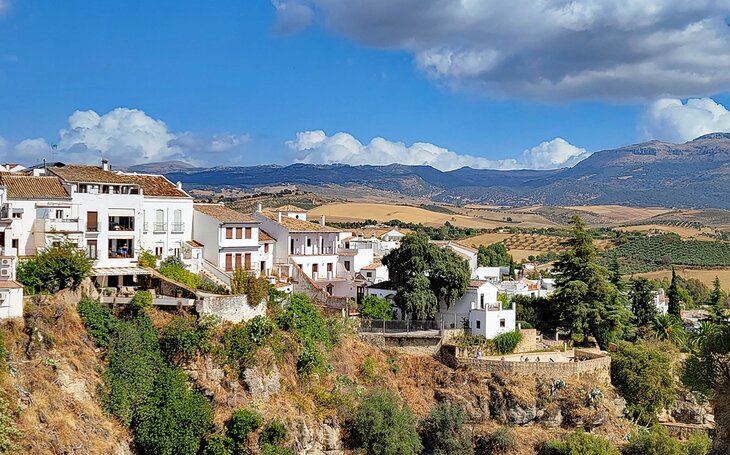
In the old town (La Ciudad), the narrow, labyrinthine streets and whitewashed buildings reveal a rich Moorish inheritance. The ancient Arab Baths in the Barrio de San Miguel are further proof of the Islamic influence.
The city has several pedestrian-only streets full of restaurants and shops selling local crafts and souvenirs. For a delightful afternoon meal, settle into a table on the Plaza del Socorro and gaze up at the stunning façade of Parroquia de Nuestra Señora del Socorro.
To get the iconic picture of the Rhona bridge, you must walk down into the gorge via the Camino de los Molinos (a strenuous and steep walk). Other viewpoints in the old town include Mirador de Aldehuela and those near Casa del Rey Moro.
During spring and summer, Ronda comes to life with its festivals. The Feria de Pedro Romero festival in September features a parade of women dressed in Goyesque (18th-century Spanish) costumes and a traditional Goyesque bullfight.
At the end of August and in early September, the Ronda International Folk Gala delights audiences with folk dance performed by groups from over 50 countries.
Other events include the festivities and religious processions during Semana Santa (Holy Week) around Easter.
The city has a huge underground parking lot called Parking Martinez Astein that is well-marked and quite reasonably priced.
Grazalema: A High-Mountain Village in a Natural Park
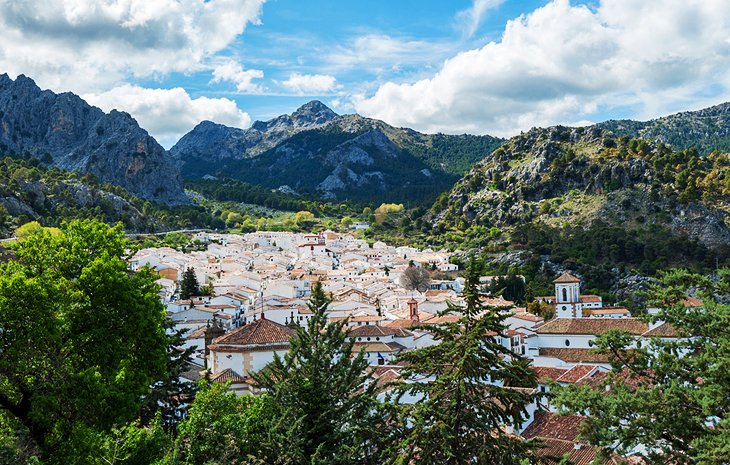
Grazalema, one of Spain's rainiest towns, is a picturesque high-mountain village of the Cádiz province (50 kilometers from Arcos de la Frontera), nestled in a valley and surrounded by the Parque Natural de Sierra de Grazalema. This expansive natural park covers more than 53,000 hectares and is listed as a UNESCO Biosphere Reserve, as well as a "special protection zone" for birds.
The rugged scenery of limestone mountains, rare Pinsapar (fir) forests, oak groves, and rushing rivers inspires outdoor activities. Favorite things to do at the Sierra de Grazalema nature reserve include hiking (permit required in the high season), fishing, and bird-watching.
One of the best places to visit for Moorish ambience, Grazalema is a delightful cluster of quaint whitewashed houses, narrow alleyways, and quiet squares. The maze of pedestrian streets leads to homes with colorful potted flowers bursting from windowsills, and astounding views of the craggy mountains in the distance.
Grazalema has a lovely 18th-century church, the Iglesia de Nuestra Señora de la Aurora, and a 17th-century parish church, the Iglesia de Nuestra Señora de la Encaminación.
The village is also well known for its artisan crafts, especially the Mantas de Grazalema blankets, and the Mantas de Grazalema textile factory museum offers fascinating insights into their creation and history.
The Multicultural Heritage of Vejer de la Frontera
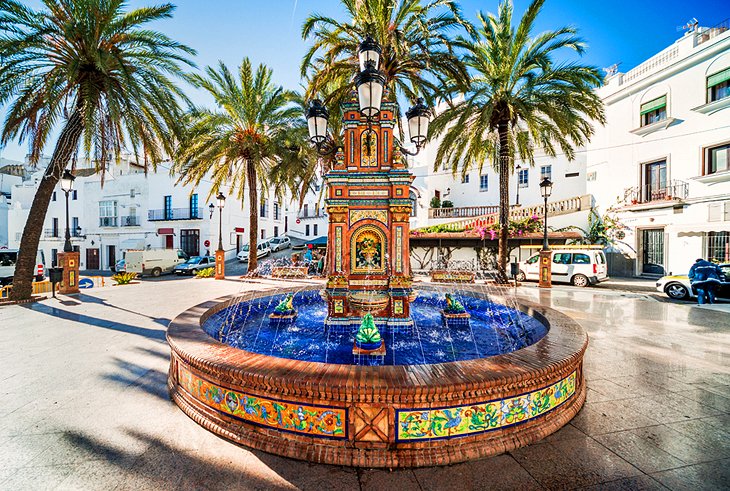
Perched high above the Río Barbates and only 10 kilometers from the sea, the hilltop village of Vejer de la Frontera is one of the prettiest of the Pueblos Blancos. Many spots in the village offer panoramic vistas of the coastline. This medieval fortified town was under Muslim rule for six centuries.
A distinctive Moorish influence is found throughout the village in its Mudéjar architecture; leafy palm trees; winding cobblestone streets; arched passageways leading through the old ramparts; and boxy, whitewashed houses with flower-bedecked courtyards.
Because of its rich heritage, the village is designated as a Historical Artistic Monument. The 10th- to 11th-century Moorish castle is a top attraction along with the Arch of Segur; the Judería (old Jewish quarter); and the Plaza de España, a fountain-adorned town square.
The village has two noteworthy churches: the Iglesia del Divino Salvador (built on the site of a Moorish mosque) and the Santuario de la Nuestra Señora de la Oliva, which celebrates the Feast of the Assumption on August 15th with a procession led by the church's precious Virgin Mary sculpture.
The Historic Monuments of Medina Sidonia
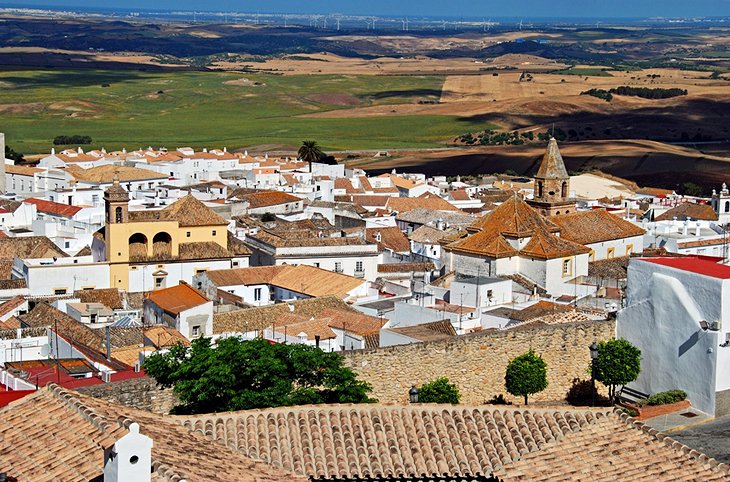
Steeped in history going back to Roman times, Medina Sidonia is a characteristic Pueblo Blanco just six kilometers south of Arcos de la Frontera. An unspoiled countryside (of pastoral land and bull ranches) surrounds this majestic hilltop village.
The main tourist attractions of the village are its Gothic church, the Iglesia de la Santa María de la Coronada, which has an impressive Plateresque retablo; the ruins of a 13th-century Moorish alcazar (castle); the ancient ramparts; and the Roman bridge.
Worth checking out is the 1st-century Roman archaeological complex (Conjunto Arqueológico Romano), which you can find underground in the town center. Step into the past by exploring remarkably well-preserved subterranean Roman sewers, storerooms (cryptoporticus), and homes.
The village has several other historic churches: the 17th-century Convento de las Descalzas, which has an exquisitely decorated dome, and the 7th-century Ermita de los Santos Mártires (hermitage), one of the region's oldest churches.
The serene Monasterio de San José del Cuervo stands outside the village in a remote and peaceful environment. It is a cloistered convent and not generally open for tourist visits inside.
Zahara de la Sierra in the Sierra de Grazalema
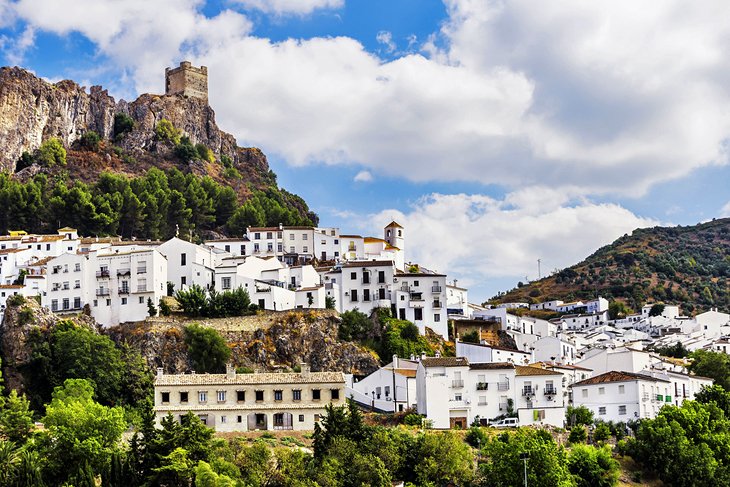
The stunning little village of Zahara de la Sierra is set into a steep hillside at the heart of the Sierra de Grazalema mountains. This area falls within the Parque Natural Sierra de Grazalema, a 54,000-hectare UNESCO Biosphere Reserve.
The town dates back to Moorish times and has endured a turbulent history because of the conflicts between Islamic and Christian rulers. By the 15th century, the Christians reconquered Zahara de la Sierra with help from Don Fernándo. The town is 55 kilometers from Arcos de la Frontera in the province of Cádiz.
The steep climb to the Nasrid Tower (Torre del Homenaje) of the ruined castle is a must-do when visiting. The 360-degree panoramic view from the top is an absolute highlight. This view features the stunning turquoise-blue Zahara-El Gastor Reservoir, a popular spot for kayaking and swimming.
The village is famous for its Fiesta del Corpus Christi (around Easter), a religious festival featuring elaborate decorations all over town. This traditional festival has become a popular tourist attraction.
Spring and summer bring blooming fields of wildflowers in the surrounding countryside, which enhances the wonderful vistas found from many viewpoints in the village.
The High-Mountain Village of Villaluenga del Rosario
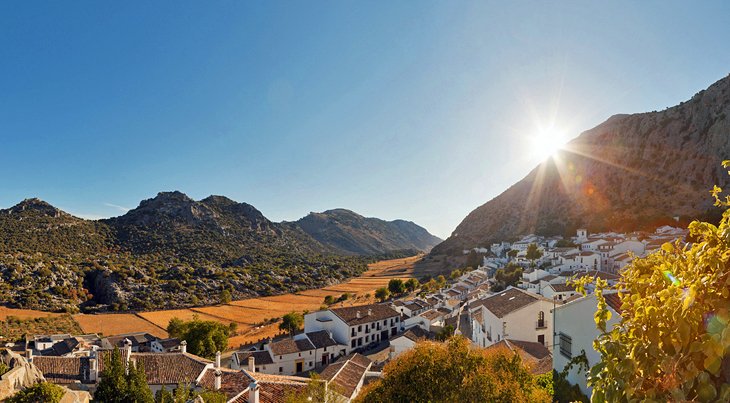
At the foot of a rocky massif, Villaluenga del Rosario is a high-mountain town in the magnificent Sierra de Cádiz (about 13 kilometers from Grazalema). The village is located within the UNESCO-listed Sierra de Grazalema Natural Park.
This typical whitewashed village has a small 16th-century church, the Iglesia de San Miguel. The village also boasts the oldest bullring in the province of Cádiz, which is constructed entirely out of stone.
Villaluenga is the center of production for the famous queso payoyo, a cheese made from the milk of the local payoya goat. The cheese factories in the area are a major attraction, offering tours, tastings, and even a cheese museum.
You can travel just outside the village to the Cuevas de la Manga, prehistoric caves where remains of the Neolithic era were found. The mountainous area surrounding Villaluenga del Rosario is also a great place for things to do outdoors, such as hiking and mountain climbing.
Seaside Views and Village Charm in Salobreña
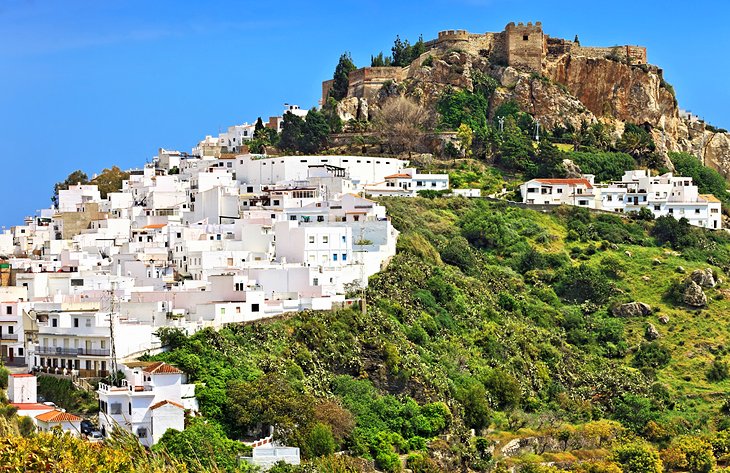
On the balmy "Costa Tropical," Salobreña is tucked into a hillside that overlooks the Mediterranean Sea. The small historic town of Salobreña is a tightly packed collection of whitewashed buildings, presided over by an ancient Moorish castle on the hilltop.
This charming village offers ambience and stunning seaside panoramas combined with great weather and a beautiful natural environment. Because of the warm climate, exotic tropical fruits and sugar cane flourish in this area.
About two kilometers from the village of Salobreña are several fabulous, expansive beaches with mild waters and good tourist facilities. This marvelous coastline attracts travelers who enjoy outdoor activities, especially water sports such as scuba diving and windsurfing.
Salobreña is 68 kilometers (a 45-minute drive) south of Granada and not traditionally considered part of the Ruta de los Pueblos Blancos, which is primarily based in the provinces of Cádiz and Málaga, but it is definitely worth seeing if you are down this way.
Benaocaz: An Ancient Moorish Village
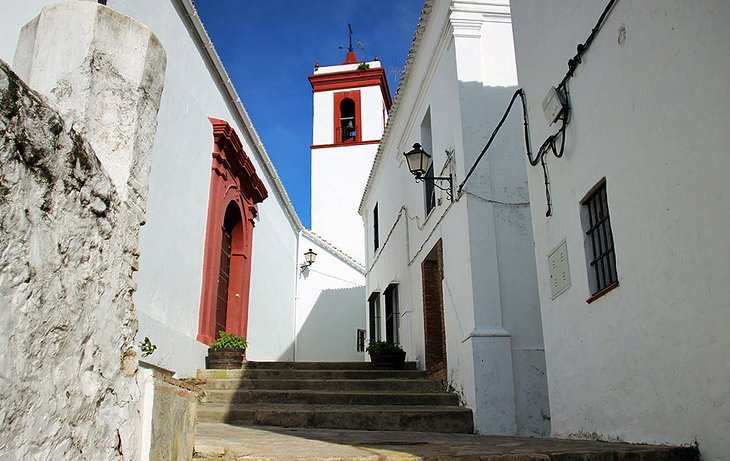
This lovely, Moorish, whitewashed village is perched on a hilltop in the Sierra de Grazalema natural park. The oldest part of Benaocaz, the Barrio Nazarí dates back to the 8th century and has a typical Arabic character, seen in its maze of narrow, winding streets and pedestrian staircases.
Top attractions are the Aznalmara Castle, built in the 13th and 14th centuries; the tiny San Blas chapel; the hilltop hermitage of El Calvario, with its sweeping views of the countryside; and the San Pedro Apóstol parish church, an excellent example of 16th-century Renaissance architecture.
The area outside of the village has many scenic hiking paths and walking routes, including a trail along the ancient Roman Road. Benaocaz is 46 kilometers from Arcos de la Frontera.
The Cave Dwellings of Setenil de las Bodegas
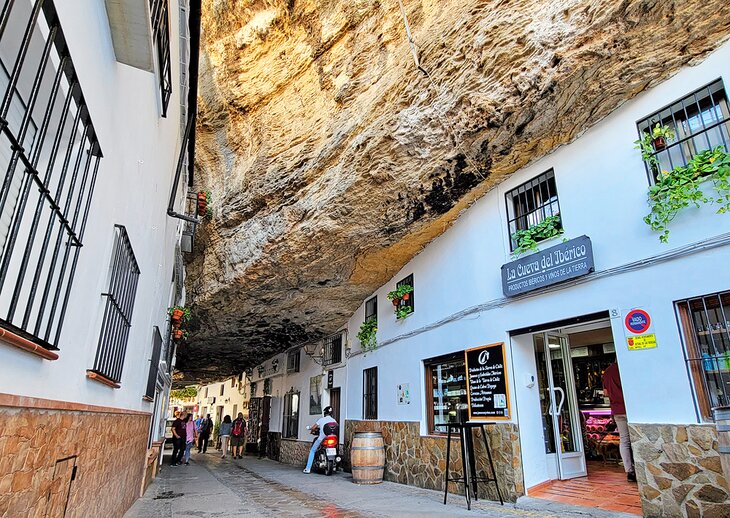
A short drive from Ronda (less than 20 kilometers away), Setenil de las Bodegas is a worthy detour. This surprising Pueblo Blanco grew out of a collection of cliff-enclosed cave dwellings hewn from rock. Entire blocks of whitewashed buildings are submerged under massive, naturally occurring rocky overhangs.
Be prepared to walk up, down, and all around and perhaps get a bit lost along the way in order to see all the key sights in this White Village. You never know what's around the next corner, but chances are you'll come across enticing little restaurants underneath huge hanging rocks regardless of your routing.
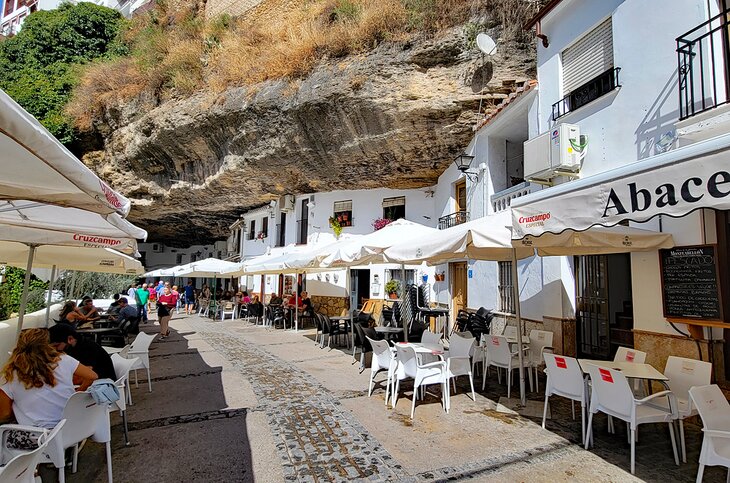
Setenil de las Bodegas has been settled since the Moorish Almohad period of the 12th century. A legacy of the Islamic heritage, the ruins of a Moorish castle overlook the medieval village. The castle can be toured, and climbing the Torreón del Homenaje tower is well worthwhile. The views from the top out over the village below and the surrounding countryside are spectacular.
Parking here is a challenge; try and snag a spot by the bus stop.
Map of Pueblos Blancos of Andalusia (White Villages)
More Related Articles on PlanetWare.com
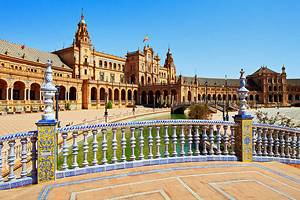
Quintessential Andalusia: If you're visiting the Pueblos Blancos you'll also want to see the sights of Andalusia. The enchanting city of Seville (about a 90-minute drive from Arcos de la Frontera) dazzles visitors with its old-world ambience and flamboyant festivals. Highlights include two UNESCO World Heritage Sites: the Catedral de Sevilla, a glorious Gothic cathedral, and the Real Alcázar, a lavish Moorish palace surrounded by lush Andalusian gardens.
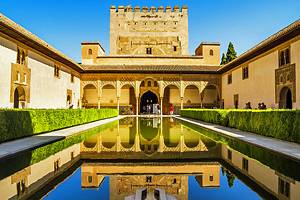
Other Highlights of Andalusia: This distinctive region of Spain boasts splendid historic cities. Just over a two-hour drive from Ronda, Granada has a fascinating multicultural heritage and the breathtaking Alhambra, a Moorish citadel built on a hilltop backed by snowcapped mountains.
Córdoba (about a two-hour drive from Setenil de las Bodegas) is renowned for its UNESCO-listed 8th-century mosque, ensconced within an atmospheric old town.
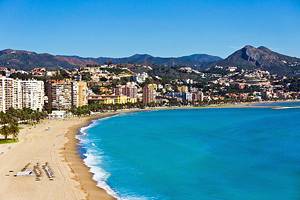
Seaside Cities and Sunny Beaches: Near the Pueblos Blancos are interesting seaside destinations along the Costa del Sol and the Costa de la Luz. A 40-minute drive from Jerez de la Frontera or Medina Sidonia, the elegant seaport of Cádiz is surrounded by gorgeous beaches.
The resort town of Marbella (about a one-hour drive from Ronda) has posh beach clubs and a quaint historic center.
Málaga (a one-hour drive from Marbella) is an authentic Mediterranean seaport with a sandy beach, palm-fringed seaside promenades, and waterside restaurants that serve delicious seafood.


